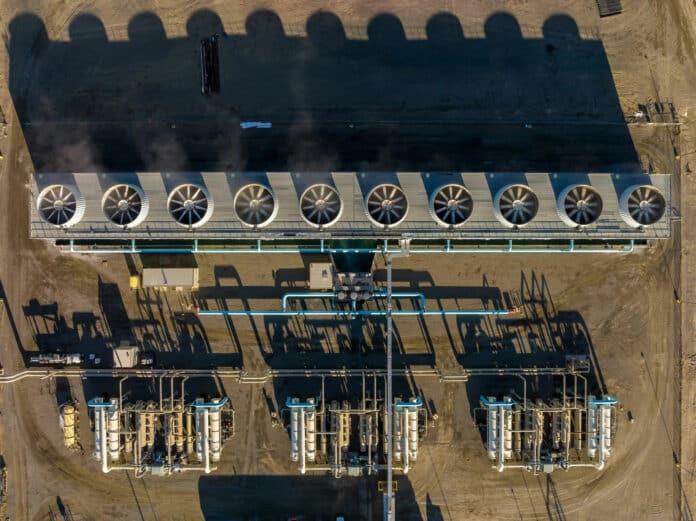Google has set an ambitious goal to operate its data centers and office campuses on 24/7 carbon-free energy (CFE) on every grid where they operate by 2030, aiming to accelerate the decarbonization of the world’s electricity systems.
To make this vision a reality, the company is investing in innovative clean energy technologies that can provide reliable and low-carbon electricity. One of the most promising opportunities is enhanced geothermal energy (EGS), which taps into the Earth’s natural heat and generates electricity without burning fossil fuels or releasing carbon into the atmosphere. This helps provide a supply of clean energy that complements variable renewables like wind and solar, bringing them closer to operating on 24/7 carbon-free energy.
Two years ago, the tech giant partnered with clean-energy startup Fervo Energy to develop an enhanced geothermal power project. The geothermal project is now operational, and carbon-free electricity has started flowing onto the local grid that serves Google’s data centers in Nevada.
Earlier this year, Fervo Energy made a significant geothermal breakthrough. Their system was able to achieve flow and power output records for an EGS, producing a whopping 3.5 megawatts of electricity. This amount of energy generated is enough to power approximately 2,600 homes. Fervo Energy’s groundbreaking test result is the first instance where an energy company has demonstrated that an EGS can work on a commercial scale.
Unlike traditional geothermal plants relying on naturally heated water sources, Fervo uses drilling techniques pioneered by the oil and gas industry to harness heat that would have previously been difficult to access.
To tap into this subsurface heat at Google’s site in Nevada, Fervo dug two horizontal wells over 7,000 feet deep, then extended the well horizontally to reach more of the hot reservoir. It drilled a second horizontal well to intersect the fractures in the rock.
The company then pumped cold water from the first well through the fractures into the second well, where the water absorbed heat from the surrounding rock. This process generated steam and produced CFE. The installed fiber-optic cables capture data that shows the flow, temperature, and performance of the geothermal system in real time.
The result is a geothermal power plant that can produce round-the-clock CFE using less land than other clean energy sources and drawing on skills, knowledge, and supply chains from other industries. Google has been supporting the project’s development from its early stages to its successful completion, working closely with Fervo to overcome obstacles and demonstrate the viability of this technology.
Google also recently announced a partnership with Project InnerSpace, a non-profit organization dedicated to the global development of geothermal energy, to accelerate the adoption of geothermal energy.
Fervo is currently constructing an EGS site in Utah, which will generate 400 megawatts of 24/7 carbon-free electricity. This amount of electricity will be sufficient to power up to 300,000 homes. The site is expected to deliver power to the grid in 2026 and reach full-scale production two years later.
